Are you looking to boost your health and your garden at the same time? Look no further!
Growing your own superfoods is not only rewarding but also ensures you have a fresh supply of nutrient-packed produce right at your fingertips. Here are the superfoods you should consider adding to your vegetable garden, along with the compelling reasons why and expert tips on how to grow them!
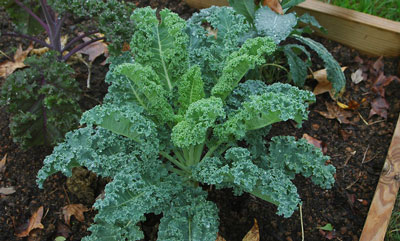
Kale: The King of Greens
This leafy powerhouse is packed with vitamins A, C, and K, as well as antioxidants. Kale’s anti-inflammatory properties make it a must-have for any health-conscious gardener. Kale is known to support immune function, bone health, and detoxification.
How to Grow:
- Seeding: Sow seeds directly into the ground 1/4 inch deep, about 6 weeks before the last frost date.
- Transplanting: Plants can be transplanted as early as 1-2 weeks before the last frost.
- Soil: Prefers well-drained, fertile soil with a pH between 6.5 and 6.8.
- Sunlight: Requires full sun to partial shade.
- Watering: Keep the soil consistently moist but not waterlogged.
- Harvesting: Harvest kale leaves as needed, starting with the outer leaves.
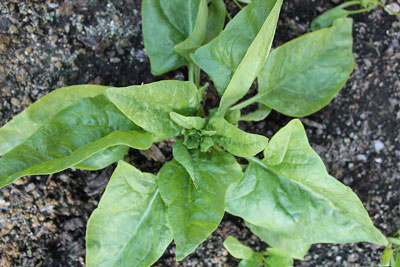
Spinach: Popeye’s Favorite for a Reason
High in iron, vitamins, and folate, spinach supports eye health and may reduce cancer risk. It’s also incredibly easy to grow and perfect for cooler weather. Plan for increased spinach production in the spring and fall!
How to Grow:
- Seeding: Sow seeds directly into the garden 1/2 inch deep in early spring or late summer.
- Transplanting: Plants can be transplanted after the last spring frost.
- Soil: Prefers well-drained, loamy soil with a pH between 6.5 and 7.0.
- Sunlight: Requires full sun to partial shade.
- Watering: Keep the soil consistently moist but avoid waterlogging.
- Harvesting: Harvest spinach leaves when they are young and tender.
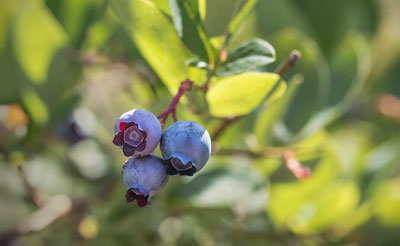
Blueberries: Brain-Boosting Berries
Rich in antioxidants, blueberries may improve memory and heart health. Plus—they’re a delicious addition to many recipes and wonderful for snacking right out of your garden! High in vitamins C and K, blueberries also help reduce oxidative stress (an imbalance of antioxidants and free radicals in your body that can cause cell damage) and inflammation.
How to Grow:
- Seeding: Blueberries are generally grown from nursery plants, not seeds.
- Transplanting: Plant nursery-grown bushes in early spring or fall.
- Soil: Prefers acidic soil with a pH between 4.5 and 5.5.
- Sunlight: Requires full sun.
- Watering: Keep the soil consistently moist but well-drained.
- Harvesting: Harvest blueberries when they are fully ripe and easily come off the bush.
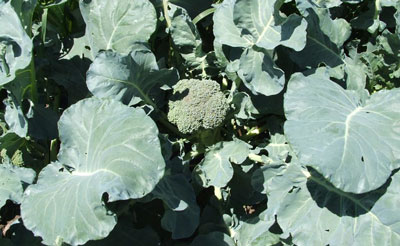
Broccoli: The Green Machine
Packed with fiber and vitamins, broccoli is known for its potential cancer-fighting properties. It contains sulforaphane, which supports detoxification and may reduce the chance of cancer, diabetes, and heart health concerns. Broccoli is perfect for spring and fall gardens.
How to Grow:
- Seeding: Sow seeds 1/4 inch deep indoors 6-8 weeks before the average last frost date for your area.
- Transplanting: Plants can be transplanted as early as 1-2 weeks before the last frost.
- Soil: Prefers well-drained, fertile soil with a pH between 6.0 and 7.0.
- Sunlight: Requires full sun.
- Watering: Keep the soil consistently moist.
- Harvesting: Harvest the central head of your broccoli when it is firm and tight, before the flower buds open.
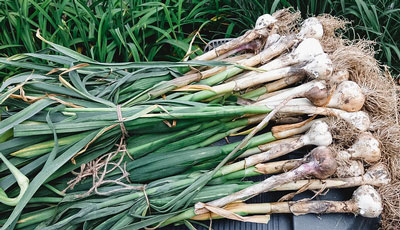
Garlic: Nature’s Antibiotic
With its antibacterial and antifungal properties, garlic is a natural health booster. It’s also a low-maintenance crop that adds flavor to your favorite savory recipes and supports heart health.
How to Grow:
- Seeding: Plant individual cloves directly into the soil 2 inches deep, 4-6 weeks before the ground freezes.
- Soil: Prefers well-drained soil with a pH between 6.0 and 7.0.
- Sunlight: Requires full sun.
- Watering: Water regularly but allow the soil to dry out between waterings.
- Harvesting: Harvest garlic when the lower leaves turn brown, usually in mid to late summer.
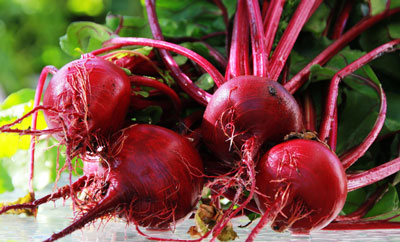
Beets: The Heart’s Best Friend
These colorful root vegetables are rich in nitrates that may lower blood pressure. Beets are packed with antioxidants, fiber, and essential minerals. They’re also great for soil health when you practice crop rotation (rotate which vegetables you plant in which area to reduce the risk of depleting essential soil nutrients).
How to Grow:
- Seeding: Sow seeds directly into the garden 1/2 inch deep and 1 inch apart in early spring or early fall.
- Transplanting: Plants can be transplanted after the last spring frost.
- Soil: Prefers well-drained, sandy loam soil with a pH between 6.0 and 7.5.
- Sunlight: Requires full sun.
- Watering: Keep the soil consistently moist but not waterlogged.
- Harvesting: Harvest beets when the roots are about the size of a golf ball.
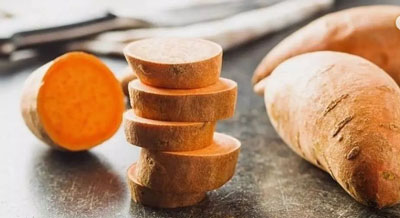
Sweet Potatoes: The Healthier Spud
With a lower glycemic index than regular potatoes and being high in beta-carotene and fiber, sweet potatoes are a nutritious, colorful, and flavorful alternative that’s easy to grow. They support eye health, boost immunity, and aid in digestion. Sweet potatoes’ high antioxidant content and nutrient density make them an excellent addition to a healthy diet.
How to Grow:
- Seeding: Start with slips (sprouts from mature sweet potatoes), not seeds.
- Transplanting: Plant slips directly into the garden when the soil is warm, about 2-3 weeks after the last frost.
- Soil: Prefers well-drained, sandy soil with a pH between 5.5 and 6.5.
- Sunlight: Requires full sun.
- Watering: Water regularly but reduce watering as the plants mature.
- Harvesting: Harvest sweet potatoes when the leaves start to yellow, typically 90-120 days after planting.
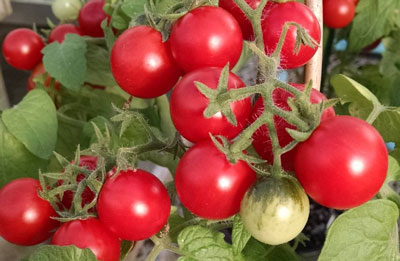
Tomatoes: Lycopene-Loaded Fruits
High in lycopene, tomatoes may reduce the risk of heart disease and certain cancers. Plus—nothing beats the taste of a homegrown tomato! They are also rich in vitamins C and K, folate, and potassium.
How to Grow:
- Seeding: Sow seeds indoors 6-8 weeks before the last frost date.
- Transplanting: Transplant plants into the garden after the last spring frost.
- Soil: Prefers well-drained, fertile soil with a pH between 6.0 and 6.8.
- Sunlight: Requires full sun.
- Watering: Water deeply and regularly, keeping the soil consistently moist.
- Harvesting: Harvest when tomatoes are fully colored and slightly firm.

Swiss Chard: The Colorful Leafy Green
Rich in vitamins and minerals, Swiss chard supports bone health and the immune system. It’s vibrantly-colored leaves makes it one of the most visually striking vegetables you can grow!
How to Grow:
- Seeding: Sow seeds directly into the garden 1/2 inch deep in early spring or late summer.
- Transplanting: Transplant plants after the last spring frost.
- Soil: Prefers well-drained, fertile soil with a pH between 6.0 and 6.8.
- Sunlight: Requires full sun to partial shade.
- Watering: Keep the soil consistently moist.
- Harvesting: Harvest Swiss chard’s outer leaves as needed, allowing the inner leaves to continue growing.
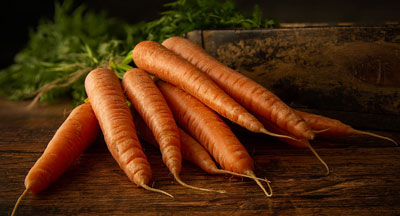
Carrots: More Than Just Good for Your Eyes
High in beta-carotene, carrots support eye health and immune function. They’re also great for gardeners with limited space and can be grown successfully in a variety of soils.
How to Grow:
- Seeding: Sow seeds directly into the garden 1/4 inch deep in early spring or late summer.
- Transplanting: Transplant plants after the last spring frost.
- Soil: Prefers well-drained, sandy loam soil with a pH between 6.0 and 7.0.
- Sunlight: Requires full sun to partial shade.
- Watering: Keep the soil consistently moist but not waterlogged.
- Harvesting: Harvest carrots when roots are about 1/2 to 1 inch in diameter.

Pumpkins: The Fall Superfood
Rich in beta-carotene and fiber, pumpkins are nutritional powerhouses. Growing them can be a fun family activity, especially when looking forward to Halloween! They are excellent for digestive health and easily used in both sweet and savory recipes.
How to Grow:
- Seeding: Sow seeds directly into the garden 1 inch deep after the last average frost date for your area.
- Transplanting: Transplant plants after the last spring frost.
- Soil: Prefers well-drained, fertile soil with a pH between 6.0 and 6.8.
- Sunlight: Requires full sun.
- Watering: Keep the soil consistently moist.
- Harvesting: Harvest pumpkins when the skin is hard and the pumpkin sounds hollow when tapped, usually in late summer or early fall.
Why Grow These Superfoods?
Freshness: Nothing beats the taste and nutritional value of freshly harvested home-grown produce. Just like everything tastes better when cooked over a campfire, veggies taste best when they are grown and harvested from your own garden
Cost-Effective: Growing and preserving your own harvest can be a money-saver. Once past the initial outlay for canning materials, preserving your harvest is cost-effective and fun!
Organic Control: You decide what goes into your soil and onto your plants. See our articles on beneficial insects for more insight into organic vegetable gardening.
Environmental Impact: Growing your own produce reduces packaging waste and harmful transportation emissions.
Educational: This is a great way to teach kids about nutrition and where food comes from, as well as teaching them the value of family activities.
Therapeutic: Many studies have shown that gardening can be relaxing, physically beneficial and an extremely rewarding hobby.
By incorporating these superfoods into your garden, you’re not just growing plants – you’re cultivating a healthier lifestyle. Whether you have acres of land or just a few pots on a balcony, there’s a superfood that can fit into your space. So grab your gardening gloves and get ready to supercharge your diet with homegrown goodness!





























































































































































































































































































































































































































































































































































































































































